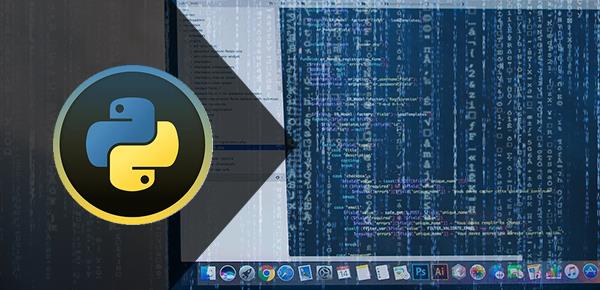这篇文章小编给大家介绍几个python去掉标点符号的实用方法,感兴趣的小伙伴可以耐心阅读一下这篇文章,小编的文章讲解的非常透彻非常适合python初学者的阅读。

我们废话少说,直接来看看如何在Python去掉标点符号的方法:
方法一:我们可以利用string返回值:如果string至少有一个字符并且所有字符都是字母或数字则返回True,否则返回False。
实例:
>>> string = "Special $#! characters spaces 888323" >>> ''.join(e for e in string if e.isalnum()) 'Specialcharactersspaces888323'
只能识别字母和数字,杀伤力大,会把中文、空格之类的也干掉
方法二:运用string.punctuation
import re, string
s ="string. With. Punctuation?" # Sample string
# 写法一:
out = s.translate(string.maketrans("",""), string.punctuation)
# 写法二:
out = s.translate(None, string.punctuation)
# 写法三:
exclude = set(string.punctuation)
out = ''.join(ch for ch in s if ch not in exclude)
# 写法四:
>>> for c in string.punctuation:
s = s.replace(c,"")
>>> s
'string With Punctuation'
# 写法五:
out = re.sub('[%s]' % re.escape(string.punctuation), '', s)
## re.escape:对字符串中所有可能被解释为正则运算符的字符进行转义
# 写法六:
# string.punctuation 只包括 ascii 格式; 想要一个包含更广(但是更慢)的方法是使用: unicodedata module :
from unicodedata import category
s = u'String — with - «Punctuation »...'
out = re.sub('[%s]' % re.escape(string.punctuation), '', s)
print 'Stripped', out
# 输出:u'Stripped String u2014 with xabPunctuation xbb'
out = ''.join(ch for ch in s if category(ch)[0] != 'P')
print 'Stripped', out
# 输出:u'Stripped String with Punctuation '
# For Python 3 str or Python 2 unicode values, str.translate() only takes a dictionary; codepoints
(integers) are looked up in that mapping and anything mapped to None is removed.
# To remove (some?) punctuation then, use:
import string
remove_punct_map = dict.fromkeys(map(ord, string.punctuation))
s.translate(remove_punct_map)
# Your method doesn't work in Python 3, as the translate method doesn't accept the second argument
any more.
import unicodedata
import sys
tbl = dict.fromkeys(i for i in range(sys.maxunicode) if unicodedata.category(chr(i)).startswith('P'))
def remove_punctuation(text):
return text.translate(tbl)
方法三:利用re
import re s ="string. With. Punctuation?" s = re.sub(r'[^ws]','',s)
测试:
import re, string, timeit
s ="string. With. Punctuation"
exclude = set(string.punctuation)
table = string.maketrans("","")
regex = re.compile('[%s]' % re.escape(string.punctuation))
def test_set(s):
return ''.join(ch for ch in s if ch not in exclude)
def test_re(s):
return regex.sub('', s)
def test_trans(s):
return s.translate(table, string.punctuation)
def test_repl(s):
for c in string.punctuation:
s=s.replace(c,"")
return s
print"sets :",timeit.Timer('f(s)', 'from __main__ import s,test_set as f').timeit(1000000)
print"regex :",timeit.Timer('f(s)', 'from __main__ import s,test_re as f').timeit(1000000)
print"translate :",timeit.Timer('f(s)', 'from __main__ import s,test_trans as f').timeit(1000000)
print"replace :",timeit.Timer('f(s)', 'from __main__ import s,test_repl as f').timeit(1000000)
out_put:
# sets : 19.8566138744
# regex : 6.86155414581
# translate : 2.12455511093
# replace : 28.4436721802
以上就是小编给大家带来的在python中去掉标点符号的方法,希望大家通过阅读小编的文章之后能够有所收获!如果大家觉得小编的文章不错的话,可以多多分享给有需要的人。
更多python相关文章请访问分类:python
【版权声明】本文图文出自大盘站@dapan.cc,转载请注明出处!
声明:本站所有文章,如无特殊说明或标注,均为本站原创发布。任何个人或组织,在未征得本站同意时,禁止复制、盗用、采集、发布本站内容到任何网站、书籍等各类媒体平台。如若本站内容侵犯了原著者的合法权益,可联系我们进行处理。








